Editor's note: "The Numbers of a Decade: A Journey through China's Modernization" is an interactive multimedia product launched by CGTN. It recounts the past decade's developments in China after the conclusion of the 20th National Congress of the Communist Party of China (CPC). This article offers a glimpse of insights that the product offers. Hit here for the complete experience.
As China looks ahead to the future after the 20th National Congress of the Communist Party of China, let's recount how the world's most populous country has fared during the past decade in its journey of economic, political, cultural, social and environmental development – collectively referred to as the Five-Sphere Integrated Plan.
Economy
An analysis of the last two five-year plans (FYPs) shows that rapid and sustainable economic development as well as industrial restructuring emerged as two of the main focuses of the 2011-2015 period, while the 13th FYP (2016-2020) aimed to maintain medium-high rate of growth.
While China's GDP has more than doubled in the past decade, the contribution of its economic growth to the world economy stands at 18.5 percent.
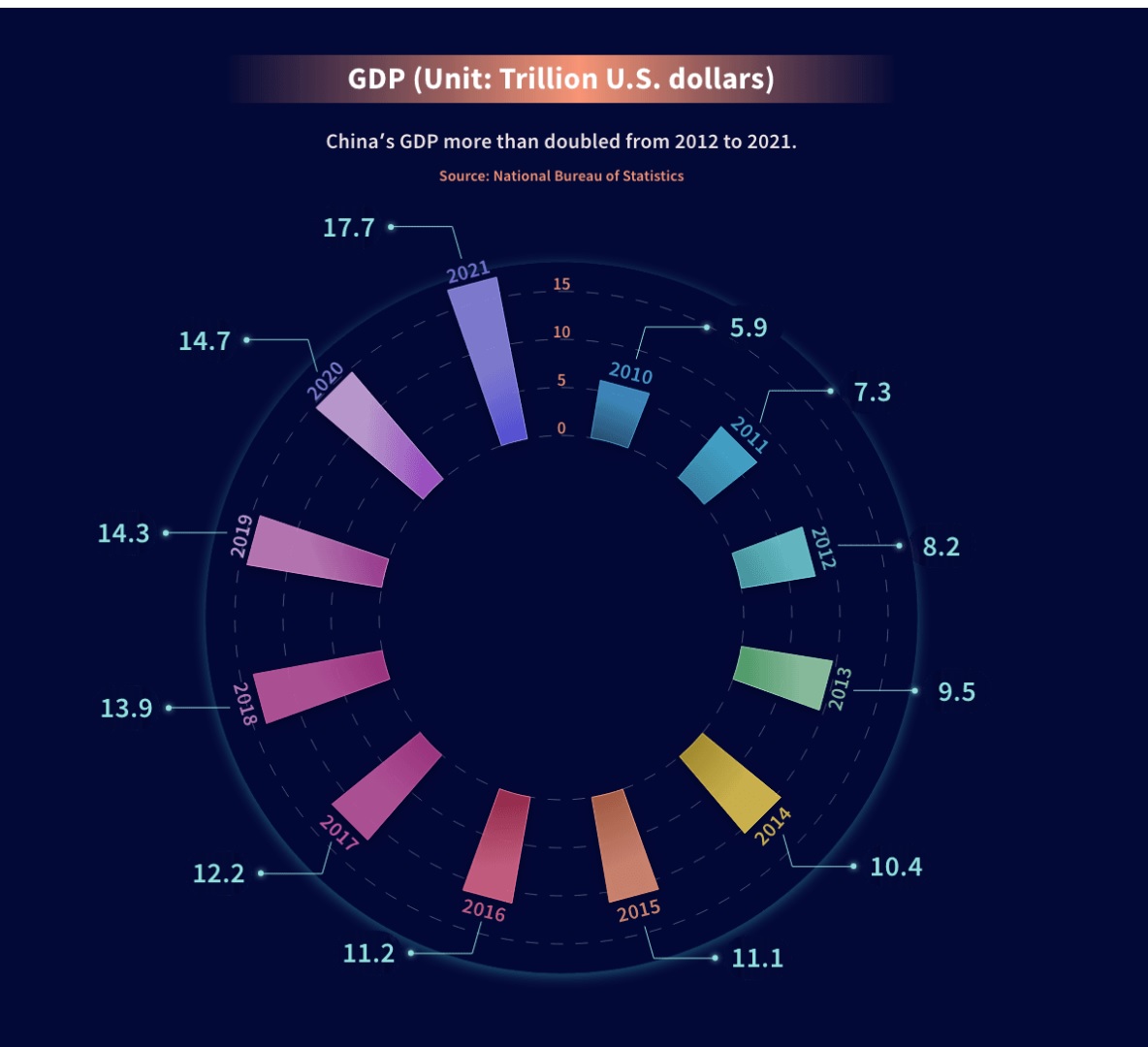
Moreover, from the depths of space to that of the oceans, China made substantial leaps in scientific and technological development, building its own space station and launching missions to the moon, Mars and beyond, besides developing its state-of-the-art aircrafts, deep-sea submersibles and supercomputers.
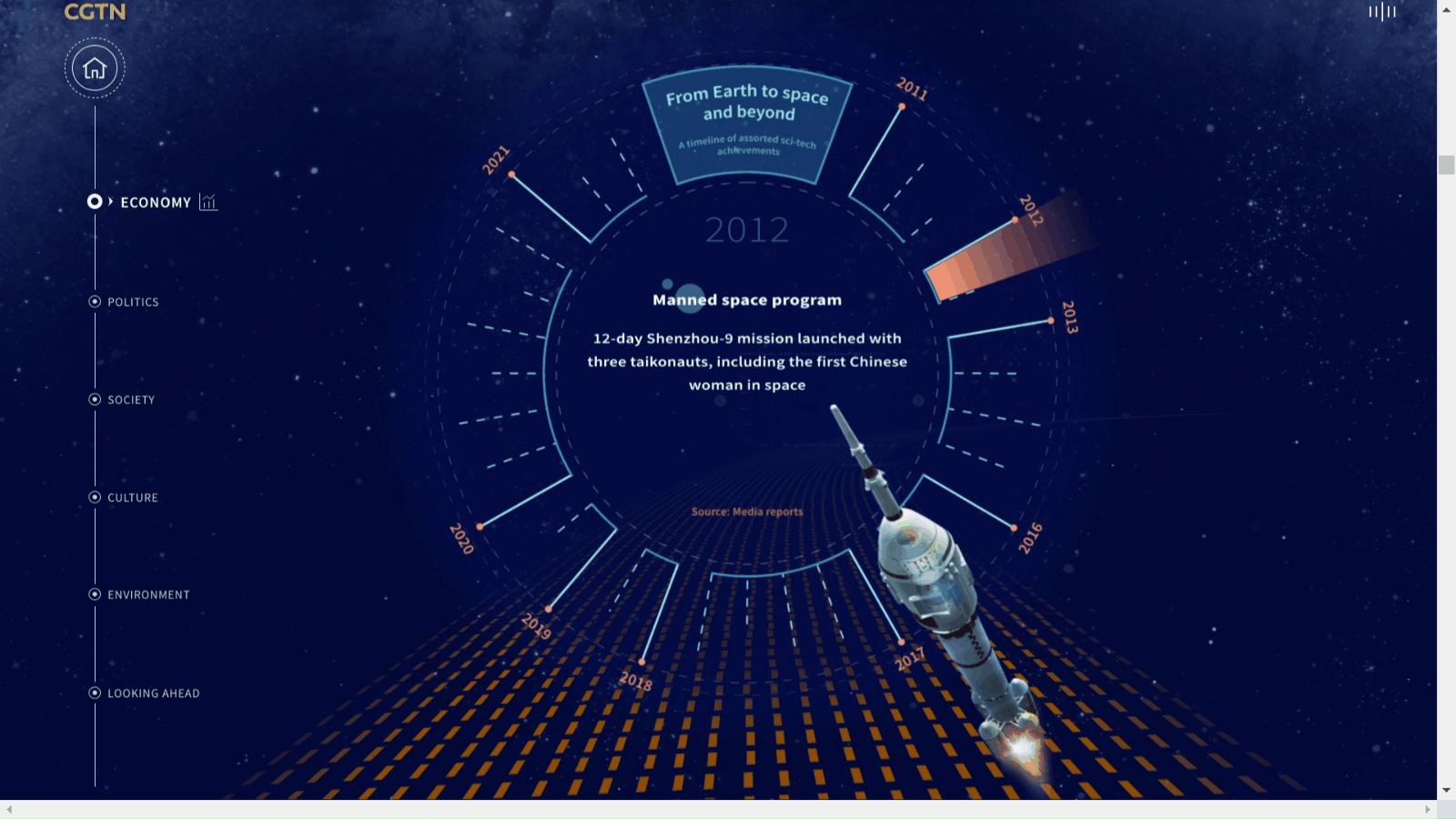
From air, rail and highway networks to a range of public service venues, China undertook a range of infrastructure projects during the past decade. One of the highlights of infrastructural development is the high-speed railway network, which expanded over sevenfold.
Politics
In the political arena, China made significant achievements in increasing people's participation in the decision-making process as well as advancing the political system with Xi Jinping's Thought on Socialism with Chinese Characteristics for a New Era.
While the CPC membership went up, the participation of non-CPC entities increased as well. In addition, soliciting opinions of the general masses on a broad range of issues has become a common practice at different levels of the government. These indicators show how democracy has been succeeding in China.
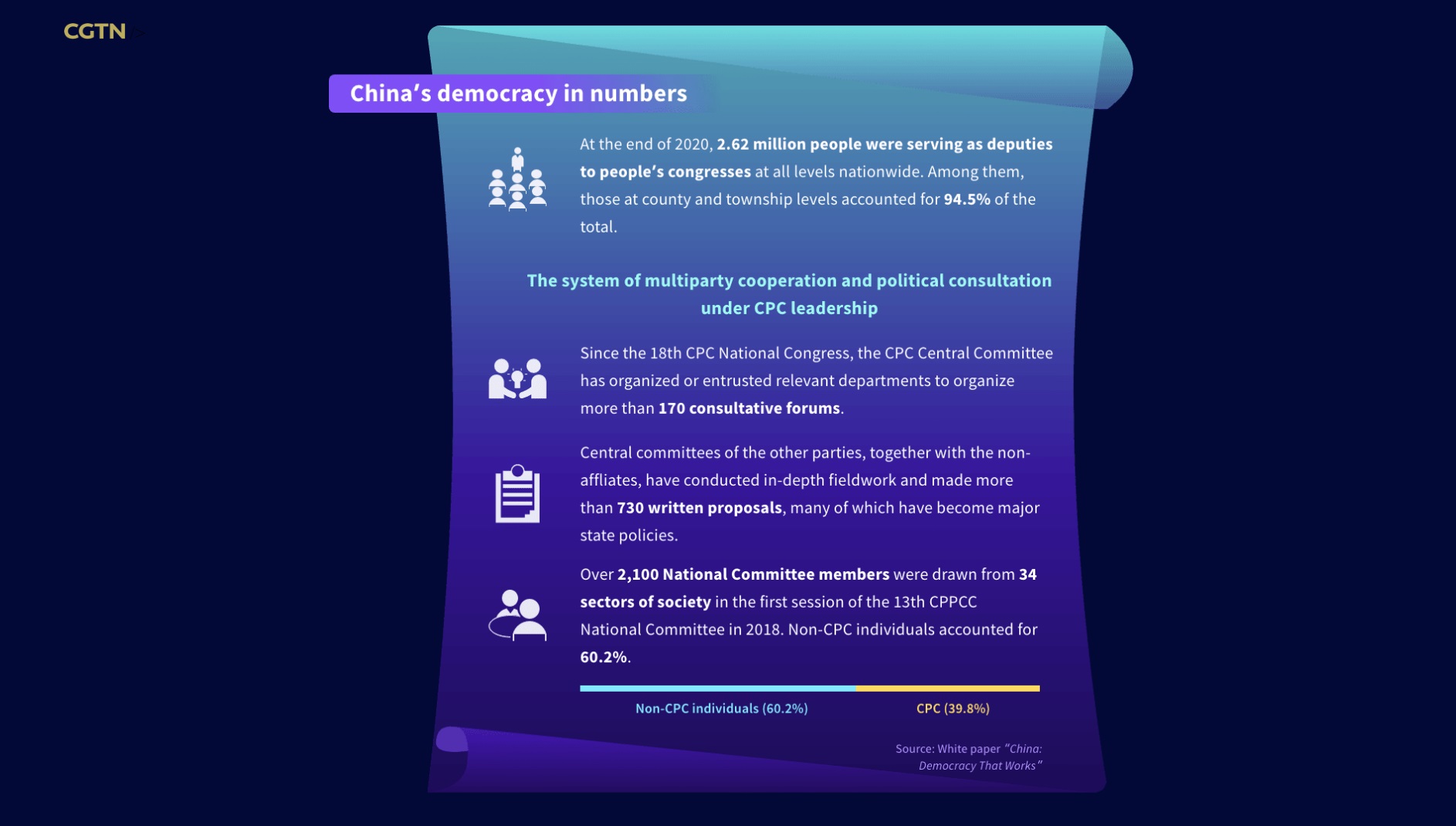
At the same time, the government has been bringing people closer, supporting its special administrative regions in integrating their own development into the overall development of the country.
Important examples in this direction are the introduction of a national security law and electoral reforms in Hong Kong Special Administrative Region. Statistics also show that Hong Kong has fared well since its return to the motherland, especially its economy in the last decade.
Culture
In the past decade, the government took a range of initiatives to not only meet people's contemporary cultural needs but also preserve history by building infrastructures like libraries, museums and galleries.
China's 55 ethnic minority groups also continued to hold their time-honored festivals with the government's support.
Moreover, China has been going above and beyond in nurturing a strong culture of sports and fitness, forging ahead with its national strategies of Fitness-for-All, Healthy China Initiative, and Building China into a Country Strong in Sports.
A large number of public sports and fitness facilities were also built in China in the past decade for strengthening the culture of fitness and raising awareness about health among the masses.
The past decade also saw groundbreaking archaeological discoveries, ranging from paleolithic sites of global significance to excavations that shed light on the roots of the Chinese civilization.
Society
China achieved one of its "two centenary goals" of becoming a "moderately well-off society" in 2021, and it is well on its way to become a "modern socialist country that is prosperous, strong, democratic, culturally advanced and harmonious" by 2049.
One of the most significant of the struggles has been of eliminating the scourge of absolute poverty.

Beyond economic prosperity, the Chinese people also experienced drastic changes in their lifestyles in the past decade. With the government's support for fintech and greater push for technological innovation, China is fast becoming a leader in mobile payment.
At the same time, a flood of new online marketplaces, further modernization of delivery methods, wider application of smart lockers, deepening of smart healthcare services and a range of QR-code enabled amenities changed the way people live.
Speaking of the health sector, the government's efforts could be gauged by the rise in average life expectancy in the country – from 74.83 years in 2010 to 78.2 years in 2021.
A recent example of the government's commitment to its promise of a healthy China is its performance during the COVID-19 epidemic. It prioritized human lives over economic gains through its dynamic zero-COVID policy and pushed vaccines as global public goods.
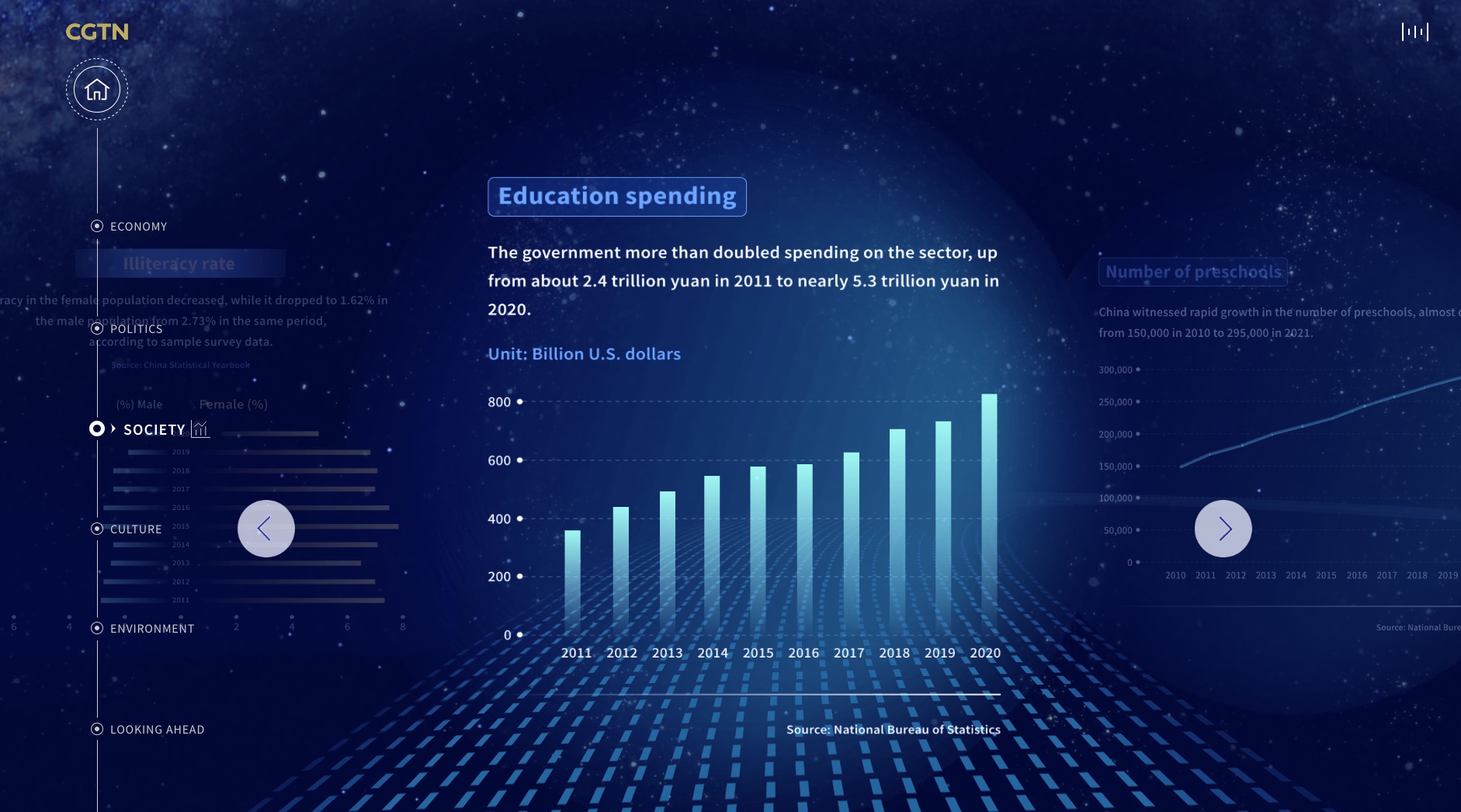
Furthermore, doubling of spending on the education sector in the past decade and universalization of free nine-year compulsory education could be part of the reason why China's literacy rate is only 2.67 percentage points shy of hitting an absolute 100 percent.
Environment
The end of the last decade saw China promising to peak carbon dioxide emissions before 2030 and achieve carbon neutrality before 2060.
This promise to the Earth and its inhabitants came hot on the heels of a decade of progress achieved in lowering its dependency on coal, shifting to alternative sources of energy, increasing forest coverage and biodiversity and taking a series of steps to mitigate climate change.
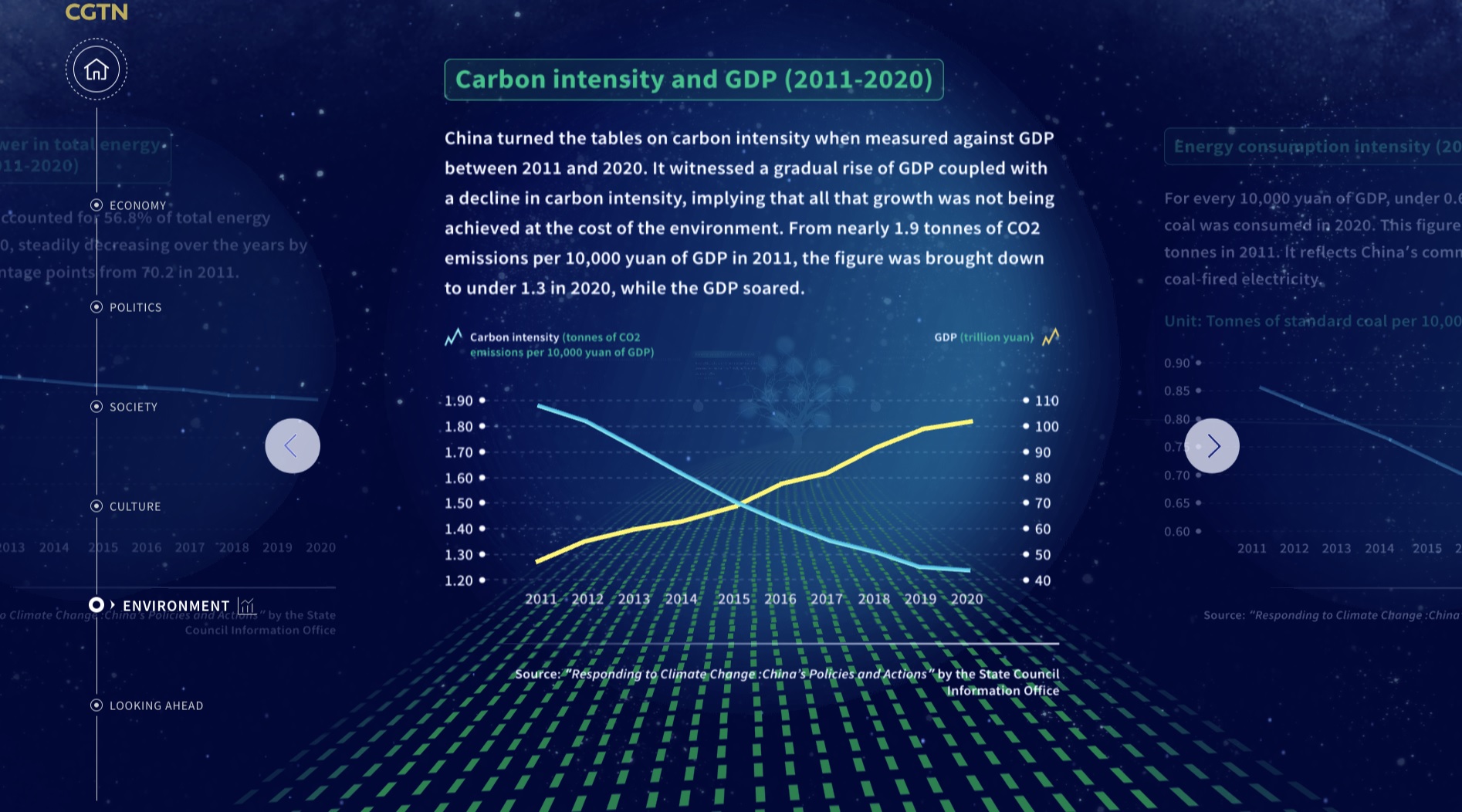
China's carbon intensity in 2020 was 18.8 percent lower than that of 2015 and 48.4 percent less than that of 2005, which means that China had more than fulfilled its commitment to the international community – to achieve a 40-45 percent reduction in carbon intensity from the 2005 level by 2020.
Visit "The Numbers of a Decade: A Journey through China's Modernization" for an in-depth account of China's journey in the past decade and insights on the way forward.